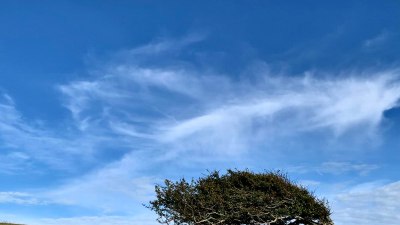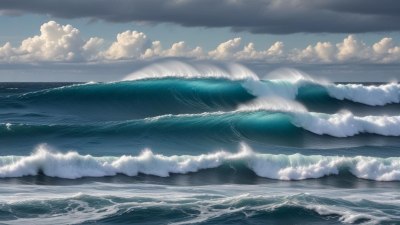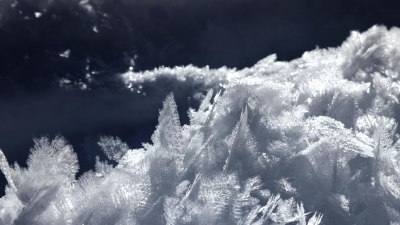How Wind Can Shape Entire Landscapes
Discover how wind influences and shapes diverse landscapes across the globe.

Wind is one of nature's most potent forces, and its influence can be seen in various landscapes around the globe. From deserts to coastal regions, wind shapes our environment in remarkable ways. In this article, we will explore how wind operates as an erosive and constructive force, detailing its impact throughout different terrains.
Understanding Wind Erosion
Wind erosion occurs when strong winds carry particles of sand and soil away from their original locations. This process is most pronounced in arid and semi-arid regions where vegetation is sparse, leaving the ground vulnerable to erosion. As winds pick up loose particles, they can transport them over great distances, effectively reshaping the landscape. The interaction between wind and the Earth’s surface is a complex process that involves several mechanisms, including deflation and abrasion.
Deflation: The Removal of Surface Material
Deflation is the process whereby wind removes loose particles from the surface, leading to the lowering of the land surface. This phenomenon is particularly evident in deserts, where strong, consistent winds can strip away lighter soil and sand. As deflation progresses, it creates blowouts, which are depressions formed from the removal of surface material. Over time, these blowouts can lead to significant changes in the topography of an area.
abrasion: Carving the Earth
Abrasion occurs when wind-driven particles collide with solid surfaces, wearing them down over time. This process can sculpt rock formations, creating unique geological features. For example, in areas like Windy Ridge or the Pinnacles Desert, wind abrasion has played a significant role in forming eerie, isolated rock columns and peculiar shapes that showcase the power of wind. The effectiveness of abrasion is influenced by wind speed, the size and weight of sand particles, and the hardness of the surface being eroded.
Landforms Created by Wind
Wind sculpted landforms include dunes, yardangs, and ventifacts. Each of these features tells the tale of wind’s relentless shaping of the Earth.
Dunes: The Ever-Changing Mountains of Sand
Dunes are perhaps the most recognizable landform created by wind. Formed when wind transports sand over time, these dynamic structures can vary in size, shape, and orientation based on wind direction and strength. Sand dunes can be categorized into several types: barchan, transverse, linear, parabolic, and star dunes. Barchan dunes, typically crescent-shaped, form in areas with a single dominant wind direction. In contrast, star dunes, characterized by multiple arms extending from a central peak, develop where winds blow from multiple directions.
Yardangs: Wind-Carved Ridge
Yardangs are streamlined landforms shaped by the erosive power of wind. Often found in deserts, these ridge-like formations extend for long distances and exhibit a distinct aerodynamic shape that indicates the prevailing wind direction. As wind consistently abrades softer material while leaving harder rock untouched, yardangs emerge as dramatic features in the arid landscape, demonstrating the long-term impact of wind erosion.
Ventifacts: The Sculptures of Nature
Ventifacts are rock formations that have been shaped by wind-blown sand and particles. These unique geological features often have polished surfaces and are evidence of wind’s intense and continuous action on the landscape. The creation of ventifacts requires consistent wind patterns and abundant sand, which often occurs in desert regions. Studying ventifacts provides insight into historical wind directions and patterns, helping scientists understand past climate conditions.
Wind's Role in Coastal Landscapes
While much of the discussion around wind has focused on arid regions, its influence on coastal areas is equally significant. Coastal landscapes are shaped by the interplay of wind, waves, and tides. Wind generates waves that erode the shoreline and transport sediments along coastlines. This dynamic process contributes to the formation of coastal features such as cliffs, beaches, and sea stacks.
Coastal Erosion and Sediment Transport
Wind-driven waves continuously erode coastal cliffs, leading to the retreat of land. As waves crash against the shore, they remove material from cliffs and transport it along the coastline. This sediment transport maintains a balance between erosion and deposition, shaping vulnerable coastal landscapes. The interaction between wind, waves, and sediment deposition creates diverse environments ranging from sandy beaches to rocky shorelines.
Sandbars and Barrier Islands
Wind also plays a critical role in the formation of sandbars and barrier islands. These structures often form in shallow coastal waters when wind-driven waves deposit sand in specific patterns. Over time, these deposits can become elevated above sea level, forming islands that serve as natural barriers against storms. Barrier islands act as protection for inland areas, making them critical components of coastal ecosystems.
Wind and Climate Influence
Beyond shaping landscapes, wind also plays a pivotal role in climate regulation. Atmospheric wind patterns help distribute heat and moisture around the globe, influencing local climates. For instance, coastal winds can bring humid air from the ocean inland, impacting temperature and precipitation patterns. Conversely, dry, continental winds can create arid conditions in certain regions.
Wind Transport and Ecosystems
The movement of air also aids in pollen and seed dispersal, which contributes to the proliferation and distribution of plant species across various environments. This transport plays a significant role in maintaining biodiversity and the health of ecosystems. Plant species have adapted to harness wind for their reproductive strategies, utilizing a myriad of tactics to ensure their seeds reach suitable habitats for germination.
Human Interaction with Wind-Shaped Landscapes
Humans have long interacted with landscapes shaped by wind, both in adaptation and exploitation. In desert regions, indigenous populations have developed unique survival strategies to cope with wind erosion and arid conditions. Architecture and agriculture in these environments often reflect an understanding of wind patterns, influencing building materials and crop choice.
Wind Energy Development
In modern times, the harnessing of wind energy is a significant development. Wind turbines are strategically placed in areas where wind patterns are favorable, generating clean energy and further altering the landscape. The expansion of wind farms can have substantial ecological impacts, necessitating careful consideration of placement and environmental effects.
The Future of Landscapes Shaped by Wind
As climate change continues to affect global weather patterns, understanding how wind shapes landscapes will be crucial. Increased frequency and intensity of wind events may accelerate erosion processes in vulnerable areas. Ongoing research is necessary to monitor and predict changes in wind patterns and their consequent influence on our planet’s landscapes.
Wind serves as a powerful sculptor of our Earth’s landscapes, influencing everything from arid desert dunes to coastal cliffs. Through processes like erosion, deflation, and abrasion, wind shapes awe-inspiring features that tell stories of time and power. As we continue to navigate the complexities of our changing environment, recognizing the dynamic forces of wind will be essential for preserving our natural world.











